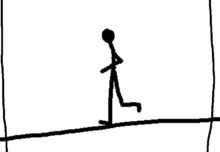B2B or B2C…Whats that?
It stands for Business to Business, or Business to Consumer.
B2B is where someone, or more than just one person of course, any business in fact, creates a product or service to sell on to another Business. The second Business is their customer who might incorporate the product or service into their own product range.
B2C is where the provider Business sells to the final customer. The final customer is the Consumer who will not sell on.
So quite a lot of the things that we buy will have been created and provided by a B2B business, maybe more than once, and then finally to a B2C business where we are the crucial C factor.
These are the two sorts of market that any product or service provider has for their service or product. And for an artist who makes a fine art product it can be a very important distinction.
For instance the B2B model would be where the artist Business provides artwork to another Business such as a gallery. The artist’s income is provided by the gallery. Whereas if the artist sells direct to an art collector then it is Business to Consumer.
And here are the BIG differences between the two models.
B2B.
View point one.
Any artist who is serious about their artwork will value the expertise and experience that a professional art dealer can provide. The gallery dealer will save the artist massive amounts of time. Efficiency all round.
View point two.
B2B is the traditional way. Largely because artists are busy making art, and selling art is seen as such a non-artistic activity. Artists are bad at business. In fact any artist who got involved in the sordid commercial business should be seen as little more than a ….oh do I need to go on?
View point three.
Galleries and other Business customers for the artists will be likely to repeat the transaction over and over again. Repeat business could be the crucial difference between survival and failure.
B2C is the new way.
View point four.
The worldwide Internet has provided a new communication network. This can efficiently and quickly enable artists and collectors to meet directly and exchange ideas, inspiration, and investment. It is possible that a homemade website and social media presence would do the job. And it is even possible for an artist with some common sense to create such a website and shop.
View point five.
B2C is cutting out the middleman who might be the one with the sordid commercial mindset. The direct communication between artist and collector will inform and inspire the artist to make better art. Collector feedback is vital, valuable and something else beginning with V.
View point six.
The artist gets much more of the money and the collector gets better value for their money if the deal is B2C. Ah yes. There is the other V. Value for Collector Consumers.
VAT and other factors.
The UK tax system can be a bit of an influence here. Value Added Tax that is. All along the chain from initial creator to final consumer every transaction is liable to tax. At the moment a VAT registered business will have to add another 20% onto every sale when a sale is made. But if the customer business is VAT registered they can get any VAT paid back, and in effect not pay it.
The threshold for any UK Business at the time of writing this is something like annual turn-over of eighty-five thousand pounds triggering off the need to register for VAT. If an artist’s Business turnover is over this threshold then they will have to charge VAT on their art products whenever they sell.
So a B2B transaction charges and collects VAT. And then discounts any VAT that it pays to B2B suppliers. Then pay the taxman any surplus of VAT taken in over VAT taken out. In effect they pay tax on their profit margin.
A VAT registered artist selling to other businesses would add 20% tax. A professional B2B artist’s Business selling to other Businesses could be spending more on things like trade fairs and trade catalogues. Yet they will probably be pricing their product much lower than retail value. So their profit margin will be a lot less. The part of their turnover that they would have to pay tax on is bearable.
The gross profit margin for many artists is quite high. The cost of materials like paint and canvas is small compared to the likely selling price when a collector buys the artwork. But if the artist is VAT registered they have to add tax whenever they sell direct to Consumers Collectors.
This can deter a reasonably successful, ambitious, artist Business from seeking more B2B volume with lower profit margin. They might not want to increase turnover, trigger registration, and have to bump up prices, unless they can surge well over the threshold. Because this could increase the price of their art by almost 20% when selling direct to Collectors.
So it is quite an issue if and when an artist’s Business approaches the £85,000 turnover threshold.
Wind of change on the High Street.
Another factor that needs to be recognized is that art galleries are closing down.
This is because of rise of the Internet and online sales, the confidence that buyers are getting in buying direct, and the cost of running a bricks and mortar gallery.
Never-the-less there are still many customers for artists who sell to other businesses. Publishers who use images for other products for instance. An artist who provides artwork for the licensing market is selling B2B.
Conclusion.
So which point of view will an artist take? B2B or B2C?
Actually it is feasible to take both. In fact it is probably crucial that the artist takes both routes from studio to collector. But be aware of what happens if and when you approach the VAT threshold.
Firstly though, the artist needs to realise and admit that they are a B.
**********************************************************************




